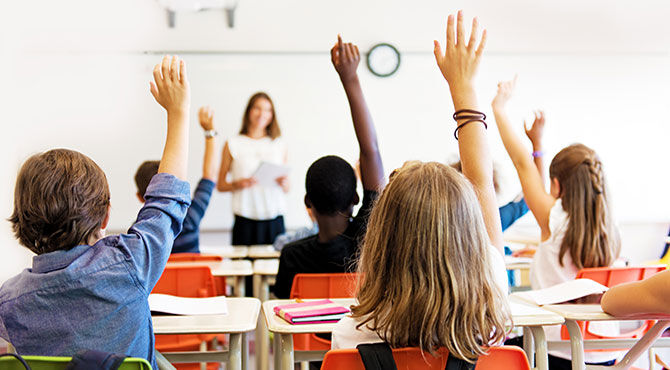School standards at risk from financial pressures
Concern is growing over the significant financial pressure schools are now facing, said to be the highest since the mid-1990s.

Asking for help
A survey of 4,000 parents for the NASUWT teachers’ union has revealed that nearly 20 per cent of parents are being asked to pay between £51 and £100 a year towards their child’s education, and over 5 per cent of parents pay £400 or more a year.More than 50 per cent said the school had asked for financial contributions, while 23 per cent claimed the school had admitted they were asking for money because of budget constraints.Dr Patrick Roach, deputy leader of the NASUWT, said, “I am concerned about creeping privatisation. We are witnessing the increasing commercialisation of education.”Chris Keates, the NASUWT’s general secretary, added, “The Government’s introduction of policies, which allow schools to charge for provision, has resulted in substantial financial pressures being placed on parents and carers.“It is not unacceptable that the curriculum options for young people are being determined by whether their parents can pay for books, equipment or field trips. And some of these practices may also be unlawful.”Related news:
- Relocate Awards: Innovation Ambassadors ignite inspiration
- Brexit could lead to academic 'brain drain'
- New GCSE grade 4 deemed a standard pass
The Public Accounts Committee is concerned that the DfE does not have the necessary arrangements in place to identify, and therefore act, if the actions schools take to make efficiency savings threaten the quality of education and educational outcomes. To reduce staff costs, schools are likely to increase teachers’ contact time and class sizes, rely more on unqualified staff and staff teaching outside of their specialism, and require head teachers and other senior staff to do more teaching.Head teachers have told the Public Accounts Committee that they plan to make savings by, among other things, dropping subjects and scaling back on school trips to avoid the cost of teaching cover. The actions schools take are likely to increase teachers’ workload, with implications for recruitment and retention, and put at risk the quality of education.Head teachers have also reported that they’ve had to cut back on support staff, including counselling and other pastoral services, which provide valuable support for vulnerable students. These cuts are being made at a time when schools are expected to do more to look after the mental health of children and young people.The DfE has said that it will gain assurance that schools are achieving desirable efficiency savings and that educational outcomes are being maintained from existing information, such as Ofsted inspections, key stage tests and exam results. However, these indicators are time lagged, and the full impact on educational outcomes may not be known for several years.
Recommendations
The Public Accounts Committee has recommended that the DfE develop and publish, by the end of June 2017, a set of indicators to gain assurance that the quality of education and the outcomes schools achieve are not being adversely affected by the need to make savings. These indicators might include the breadth of curriculum, class sizes and pupil–teacher ratios.The report also recommends that the DfE publish the results of its work to assess the impact of withdrawing the Education Services Grant; and it should routinely assess and make public the cost implications of policy changes including curriculum and assessment changes.For related news and features, visit our Education & Schools section.Access hundreds of global services and suppliers in our Online Directory Get access to our free Global Mobility Toolkit
Get access to our free Global Mobility Toolkit 
©2025 Re:locate magazine, published by Profile Locations, Spray Hill, Hastings Road, Lamberhurst, Kent TN3 8JB. All rights reserved. This publication (or any part thereof) may not be reproduced in any form without the prior written permission of Profile Locations. Profile Locations accepts no liability for the accuracy of the contents or any opinions expressed herein.









































